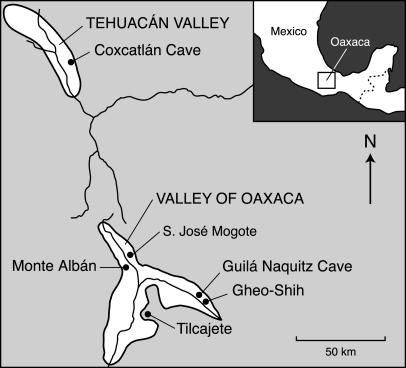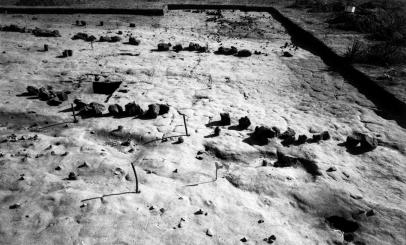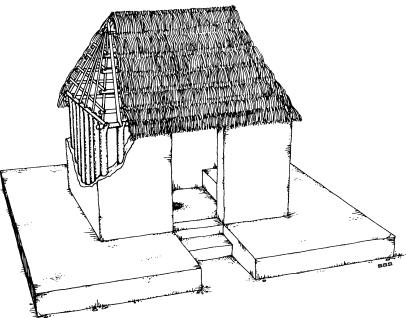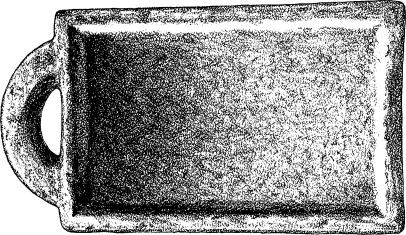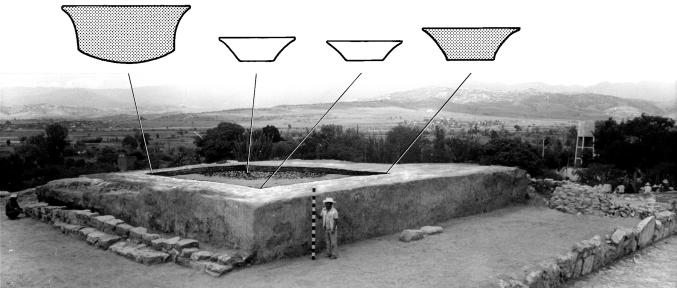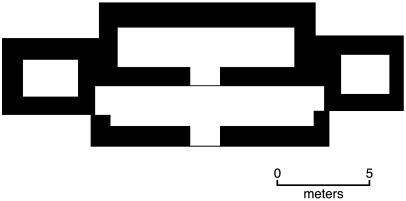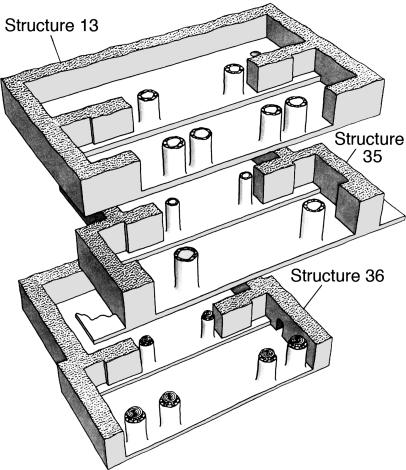Abstract
New 14C dates from Oaxaca, Mexico, document changes in religious ritual that accompanied the evolution of society from hunting and gathering to the archaic state. Before 4000 B.P. in conventional radiocarbon years, a nomadic egalitarian lifeway selected for unscheduled (ad hoc) ritual from which no one was excluded. With the establishment of permanent villages (4000–3000 B.P.), certain rituals were scheduled by solar or astral events and restricted to initiates/social achievers. After state formation (2050 B.P.), many important rituals were performed only by trained full-time priests using religious calendars and occupying temples built by corvée labor. Only 1,300–1,400 years seem to have elapsed between the oldest known ritual building and the first standardized state temple.
Keywords: calendars, Oaxaca
Religious ritual is one of the universals of human behavior. No society, ancient or modern, is known to have been without it. The nature of ancient ritual, however, could be vastly different depending on whether the society was a band of hunter-gatherers, an agricultural village with multiple descent groups, or an archaic state with nobles, priests, and commoners. We assume that ritual evolved with social complexity, but we need long, accurately dated cultural sequences to clarify the steps involved.
New 14C dates from the Valley of Oaxaca, 400 km south of Mexico City (Fig. 1), provide chronology for a model of the coevolution of ritual and society. The model begins in the era of hunting and gathering and progresses to the establishment of an archaic state, the founders of which spoke the Zapotec language.
Fig. 1.
Diagram of the valleys of Oaxaca and Tehuacán in Mexico, showing places mentioned.
Our framework for the operation of religion is drawn from the work of Rappaport (1, 2). In his scheme, religion has three components: ultimate sacred propositions, ritual, and religious experience. Ultimate sacred propositions are the highest-level beliefs held by the faithful in a society. Such propositions provide the rationale for rituals, religious acts to be performed in specific ways. If performed correctly, rituals induce religious experience, an emotional response so awe-inspiring that it reinforces belief in the validity of the sacred propositions.
Archaeologists cannot share the religious experience of ancient peoples or deduce all their ultimate sacred propositions. Ritual, however, is potentially detectable. Because it must be performed (in set ways, and often repetitively), it leaves traces for prehistorians to find, which is especially true when ritual features or buildings are involved.
We present 14C dates for Oaxaca's ancient ritual features and buildings three ways. “B.P.” refers to conventional radiocarbon years before the present. “B.C.” refers to the 2σ range of each date when dendrocalibrated to calendar years before the Christian era. “b.c.” refers to radiocarbon years before the Christian era, derived by the 50-year-old convention of subtracting 1950 from the B.P. date. (Hundreds of 14C dates in the literature are still in “b.c.” format, making it necessary to continue the convention.)
The Archaic Period (10000–4000 B.P.): A Time of Ad Hoc Ritual
The Archaic period began with the establishment of Holocene climate (ca. 10000 B.P.) and ended with the establishment of life in villages (4000–3500 B.P.). Archaic subsistence was based on hunting and gathering, with some cultivation of gourds, squash, beans, and maize (3). Because wild resources change seasonally, populations were nomadic. During lean seasons they dispersed into family bands of four to six persons. In seasons of abundance, families came together at base camps of 25–30 persons. Recent hunter-gatherers with similar cycles tend to hold their most important rituals when the largest group resides together rather than on a specific date. This type of gathering is called “ad hoc” ritual.
In the Valley of Oaxaca, camps from both settlement types have been excavated (4). Gheo-Shih is a 1.5-hectare open-air site at an elevation of 1,660 m. It seems to have been the base camp for a group of 25–30 persons during the June to September rainy season, when mesquite pods and hackberry fruits were available and gourds and squash could be planted. In the mountains 2.5 km to the north lies Guilá Naquitz, a 64-m2 cave at an elevation of 1,926 m. It was occupied by a family of four to six persons during the October to December dry season, when acorns and piñon nuts were available.
Gheo-Shih had two stratigraphic components. The uppermost produced no charcoal but is believed (on the basis of diagnostic artifacts) to date to ca. 7000 B.P. The lower component produced burnt twigs that were recently dated to 8600 ± 40 B.P. (laboratory no. β190316) and 8600 ± 50 B.P. (laboratory no. β191398). The uncalibrated versions of both dates would be 6650 b.c. Guilá Naquitz brackets Gheo-Shih in time (3); its stratum most nearly contemporaneous with lower Gheo-Shih is zone B2, dated to 8620 ± 160 B.P. (lab no. SI-515).
Both sites might have been used by the same group during different seasons. Their uses, however, were significantly different. The family occupying zone B2 of Guilá Naquitz was focused wholly on gathering food. The larger group occupying Gheo-Shih, on the other hand, found time for nonsubsistence activities such as making ornaments. They also created the earliest dated ritual feature from ancient Mexico.
What this feature most resembles is the kind of space that Native American hunter-gatherers of the Great Basin cleared for dances, initiations, or athletic competition (5, 6). It consists of a rectangular area 20 m long and 7 m wide, delimited by two parallel rows of boulders (Fig. 2). This “dance ground” was swept virtually clean; to either side, however, there were abundant artifact scatters, including debris from probable shelters. The implication is that certain rituals, for which part of the camp was formally set aside, were held during times when the maximum number of families could participate.
Fig. 2.
Possible dance ground delimited by parallel rows of boulders at the site of Gheo-Shih. Assigned by 14C to 8600 B.P., it is believed to be the oldest dated ritual feature known from Mexico.
Additional evidence for Archaic ritual comes from Coxcatlán Cave in the Tehuacán Valley, 160 km to the northwest. Dating to ca. 7000 B.P., the evidence consists of individuals who appear to have been beheaded, cooked, and cannibalized before being buried in the cave, accompanied by baskets of harvested wild plants (7). Two conclusions to be drawn are that (i) the human sacrifice so common in later Mesoamerican cultures began in the Archaic, and (ii) such sacrifice may have been an ad hoc ritual associated with harvest seasons. Significantly, Coxcatlán Cave was large enough to accommodate a multifamily band.
The Early Formative and the Advent of Calendric Ritual (3450–3100 B.P.)
By 3450 B.P., maize had evolved to the point at which it could support sedentary life in year-round villages. Between 3450 and 3100 B.P. the largest of Oaxaca's villages, San José Mogote, seems to have been 5–10 times the size of an Archaic base camp. Small houses indicate that the nuclear family was the basic residential unit, but a way of creating larger units of cooperating families now existed: an early ritual building had appeared by 3350 B.P. The best ethnographic analog for this building seems to be what scholars call a “men's house.” Such buildings are created by societies in which groups of families claim descent from a real or fictive common ancestor. Although everyone in such a society is equal at birth, individuals can acquire prestige by passing through ritual hurdles that show them to be civic achievers. Typically, men's houses are accessible only to a subgroup of the village's men, those who have passed every hurdle and are fully initiated into the secrets of men's house ritual (8).
At least 300 m2 of San José Mogote was set aside for men's houses. Each was a one-room lime-plastered building, 4 × 6 m in size, set on a platform, and surrounded by a plaster apron (Fig. 3). All had the same orientation, 8° north of east, which hints that they were aligned with the sun's path at the equinox. This is significant, as it indicates that ad hoc ritual had been joined by calendric ritual. Once villages were occupied year-round, residents could schedule some rituals to dates determined by solar or astral events.
Fig. 3.
Artist's reconstruction of a men's house from San José Mogote. Four such buildings have been dated to 3350–3270 B.P.
The features of several men's houses at San José Mogote hint at their rituals. In some cases, participants evidently sat on a plastered bench along the wall. The best-preserved structures have a pit built into the floor and filled with powdered lime, likely for use with a ritual plant such as tobacco, jimson weed, or morning glory. The historic Zapotec are known to have chewed a mixture of powdered tobacco and lime to cure illness or increase physical strength before raids (9).
Small metates (grinding stones) with traces of lime or ochre were found with some men's houses. So were unusual metates similar to the one shown in Fig. 4. It had box-like walls to prevent the spilling of the material being ground (possibly tobacco) and a handle to allow transport from the home to the men's house.
Fig. 4.
Ritual metate or grinding stone from San José Mogote. Its box-like shape prevented spilling of the ritual plant being ground (possibly tobacco), and its built-in handle allowed it to be carried between one's home and the men's house (3350–3270 B.P.).
Charcoal from four men's houses, Structures 3, 5, 12, and 15, has now been dated. The dates run from 3350 to 3270 B.P. (Table 1). The building of men's houses, however, went on until 2950 B.P., by which time each residential ward of the village seems to have had its own.
Table 1. 14C dates for the evolution of ritual in Oaxaca.
| Prehistoric event | Years B.P. | B.P. date minus 1950 | Dendrocalibrated 2σ range | Lab no. |
|---|---|---|---|---|
| Ad hoc rituals | ||||
| Dance ground at Gheo-Shih | 8600 ± 40 | 6650 b.c. | 7630-7570 B.C. | β190316 |
| 8600 ± 50 | 6650 b.c. | 7720-7560 B.C. | β191398 | |
| First calendric ritual/use of equinox: men's houses, San José Mogote | ||||
| Structure 3 | 3350 ± 40 | 1400 b.c. | 1730-1520 B.C. | β190313 |
| Structure 12 | 3340 ± 40 | 1390 b.c. | 1720-1560 B.C. | β190314 |
| Structure 5 | 3270 ± 160 | 1320 b.c. | 1940-1140 B.C. | M-2372 |
| Structure 15 | 3270 ± 40 | 1320 b.c. | 1630-1440 B.C. | β190315 |
| One-room temple with sanctification rituals, San José Mogote | ||||
| Structure 19 | 2560 ± 180 | 610 b.c. | 1110-350 B.C. | β179876 |
| Structure 28 | 2550 ± 60 | 600 b.c. | 820-550 B.C. | β177624 |
| Earliest known two-room temple | ||||
| Structure 16, Tilcajete | 1980 ± 70 | 30 b.c. | 165 B.C.-A.D. 155 | β143353 |
| Possible temple renovation using 52-year cycle, San José Mogote | ||||
| Structure 36 | 1990 ± 40 | 40 b.c. | 60 B.C.-A.D. 90 | β190922 |
| Structure 35 | 1930 ± 40 | A.D. 20 | 10 B.C.-A.D. 140 | β189254 |
| Structure 13 | 1900 ± 40 | A.D. 50 | A.D. 30-220 | β190921 |
From Men's Houses to Temples: The Period of Rank Society (3100–2450 B.P.)
Great social changes took place at San José Mogote after 3100 B.P. The estimated population rose to 1,000 persons, and signs of hereditary differences in rank appeared. The emerging elite lived in multistructure residences, wore sumptuary goods of jade, magnetite, and mother-of-pearl, and deformed their skulls as a sign of nobility. They also extended their control to smaller villages nearby (4).
As its chiefly power grew, San José Mogote began to phase out men's houses and replace them with temples, elevated above the village on pyramidal platforms of adobe and stone. In the anthropological literature, some of the differences between men's houses and temples are: (i) Although men's houses serve a social segment claiming common descent, temples at a chiefly center may serve an entire region. Those at San José Mogote contained exotic stones brought from subordinate villages, probably by corvée labor. (ii) Although use of a men's house might be restricted to full initiates, temples in chiefly societies are usually run by part-time religious specialists, making them even more restricted. (iii) The ground on which temples are built is often converted from secular to sacred by what are called “rituals of sanctification” (2). In the case of the Zapotec, such rituals could involve human or animal sacrifice and/or the burial of offerings.
San José Mogote's most important temple of this era, Structure 28, was built during the seventh century b.c. It measured 14.2 × 13.4 m and was oriented 8° north of east. Its rituals of sanctification included the burying of a large vessel under each corner of the temple [brown bowls under the northeast and southwest corners and gray bowls under the northwest and southeast corners (Fig. 5)]. In turn, Structure 28 was raised higher by a masonry platform built in three construction phases. The final phase, called Structure 19, measured 28.5 × 21.7 m; charcoal in its fill dated to 2560 ± 180 B.P. or 610 b.c. (laboratory no. β179876).
Fig. 5.
The ruins of Structure 28, a one-room temple, atop a stone masonry platform known as Structure 19. Four vessels from dedicatory rites (rituals of sanctification) were buried under the corners of the temple, which was burned at 2550 B.P.
Several kinds of ritual sacrifice characterized the period 2650–2450 B.P. One early stone monument shows a rival leader whose heart had been removed (4). A sacrificial victim was placed in the final enlargement of Structure 19, presumably as a dedication. Still another individual had been cooked and cannibalized in Feature 47, a large roasting pit; charcoal from the pit dated to 2640 ± 40 B.P. or 690 b.c. Ritual bloodletting, a form of autosacrifice, was carried out in the Structure 28 temple by using obsidian stilettos chipped to resemble stingray spines. The temple itself was eventually burned, presumably by a rival polity, at 2550 ± 60 B.P. or 600 b.c. (laboratory no. β177624).
The Zapotec State and the Origins of the Two-Room Temple
The next step in social evolution was the formation of the Zapotec state, which arose during intense conflict among rival chiefdoms. At 2450 B.P., some 2,000 people from San José Mogote and its dependencies moved to the summit of a defensible mountain named Monte Albán. From that stronghold they set about defeating their rivals and expanding against weaker neighbors, eventually creating a Zapotec state (10).
Early in the process of expansion, the leaders of Monte Albán commissioned hundreds of stone monuments depicting slain enemies (4). Early hieroglyphic inscriptions at the site fix political events in time by using two calendars: a 260-day ritual calendar (13 numbers × 20 day signs) and a 365-day solar calendar (18 units of 20 days + 5 extra days). Both calendars could be combined to form a period of 18,980 days (52 years; the time it took for the two calendars, running concurrently, to return to the identical positions on which they had jointly started). Many Mesoamerican cultures, including the Mixtec and Aztec, attached great significance to this 52-year calendar round, called eedzina by the Mixtec and xiuhmolpilli by the Aztec (11).
With the establishment of a Zapotec state, the plan of the temple underwent change: a second room was added behind the first. Based on eyewitnesses of the Spanish Colonial era, it seems that the second room was added so that full-time priests could live in the temple. Priesthood became a career for many Zapotec nobles, especially those not in line for the throne.
Because Monte Albán's earliest temples lie buried under tons of later construction, the date of the first two-room “state temple” was uncertain until a very early example came to light at Tilcajete, a rival center overthrown by Monte Albán. Called Structure 16, it was found by Spencer and Redmond (12, 13).
Structure 16 was longer and narrower than most temples at Monte Albán (Fig. 6). Approximately 21 × 8 m overall, it had a larger outer room (12.8 × 2.4 m) and a smaller inner room (9.8 × 2.2 m). There were also cubicles at either end. Structure 16 was burned when Monte Albán defeated Tilcajete; charcoal from the fire dates to 1980 ± 70 B.P. or 30 b.c. (laboratory no. β143353). Ceramics indicate that the temple was built during the period known as Late Monte Albán I (2250–2000 B.P.).
Fig. 6.
Ground plan of Structure 16 at Tilcajete, believed to be the oldest two-room Zapotec temple discovered thus far. It was built sometime before 1980 B.P. (12, 13).
Temple Renovation and the 52-Year Calendar Round: The Monte Albán II Period (2000–1750 B.P.)
By 2000–1750 B.P., the period known as Monte Albán II, two-room temples were standard features of Zapotec state religion, and so was the use of the 260-day and 365-day calendars that could be combined to form a 52-year cycle. This cycle was of particular importance to later Mesoamerican cultures such as the Aztec, who believed that their world would cease at the end of a 52-year cycle unless all old fires were extinguished and new fires lit, both in the main temple and on surrounding mountain-tops (14).
The Zapotec also recognized a 52-year cycle (11, 15), but we do not know what rites they conducted when it ended. The Zapotec did have a tendency to build new temples directly over the old, raising the question of whether such renovations took place every 52 years. A temple sequence at San José Mogote allows us to test this possibility.
During Monte Albán II, San José Mogote became a 60- to 65-hectare center in the second tier of the administrative hierarchy below Monte Albán. Four places atop Mound 1 were chosen for temples, with the most interesting sequence coming from the most northeasterly. Three consecutive temples there, some with dedicatory offerings, were built one atop the other (Fig. 7).
Fig. 7.
Three superimposed two-room temples of the period 2000–1750 B.P. at San José Mogote. Their 14C dates raise the possibility that old temples were razed and new ones built at the end of each 52-year calendar round.
The earliest temple, Structure 36, was T-shaped and measured 11 × 11 m. Both columns flanking the doorway to the inner room, and all four flanking the doorway to the outer room, were made from the trunks of baldcypress trees (Taxodium mucronatum). Because baldcypress can live 500–1,000 years, we did not attempt to date the columns. Instead, we chose pine charcoal left from the burning of incense on the temple floor. The date was 1990 ± 40 B.P. or 40 b.c. (laboratory no. β190922).
The second temple, Structure 35, was also T-shaped but larger, measuring 13.5 × 12 m. The ruler who commissioned this temple had sanctified it by burying spectacular offerings below the floor (4). Two obsidian daggers for performing heart sacrifice were found in one room. Structure 35 had two columns flanking each doorway, made not of wood but of large stones stacked one above the other and cemented in stony rubble. Charcoal from the burning of incense dated this temple to 1930 ± 40 B.P. or A.D. 20 (laboratory no. β189254).
The final temple, Structure 13, was 15 × 8 m and rectangular. Its columns, two flanking the inner doorway and four flanking the outer doorway, were of stone masonry. Charcoal from the floor dated to 1900 ± 40 B.P. or A.D. 50 (laboratory no. β190921).
To determine whether these temples might have been built at 52-year intervals, we have to turn to the dendrocalibrated versions of our dates, because the calendar round operated in “real time” rather than radiocarbon years. The midpoints for each 2 σ range (Table 1) are (i) A.D. 15 for Structure 36; (ii) A.D. 65 for Structure 35; and (iii) A.D. 125 for Structure 13. These midpoints suggest an interval of ≈50 years between Structures 36 and 35 and another of ≈60 years between Structures 35 and 13. Although not conclusive, such intervals make it hard to rule out the possibility that San José Mogote built a new temple every 52 years.
Conclusions
Our data suggest the following model for the coevolution of ritual and society. The nomadic annual cycle of the Archaic selected for the flexibility of ad hoc ritual, allowing dances, initiations, and courtship to take place whenever the largest group coresided. Once permanent villages were established, solar and astral events could be used to schedule key rituals. Two calendars were in use by 2450 B.P.; both are probably much older.
The first men's houses served small descent groups excluding only the uninitiated. With emerging social inequality, men's houses gave way to temples, the more exclusionary rituals of which were controlled by part-time specialists. The increasingly sacred nature of temple activity led to rituals of sanctification, dedicatory offerings, and escalations in bloodletting and human sacrifice.
With the rise of the state, full-time priests (often drawn from the noble stratum) began to live in the temple, creating the need for a second room. Key temples were razed and rebuilt periodically, perhaps on important calendric anniversaries.
14C dates suggest that in Oaxaca only 1,300–1,400 years elapsed between the first men's house and the first two-room state temple. What we need now are comparable dated sequences from other world regions, allowing us to evaluate the model's wider applicability.
Acknowledgments
We thank Darden Hood of Beta Analytic for special advice. We also thank the Foundation for the Advancement of Mesoamerican Studies Inc. (Crystal River, FL) for providing us with funds to run 10 new 14C dates from Oaxaca. All new dates were run by Beta Analytic (Miami).
Author contributions: J.M. and K.V.F. wrote the paper.
Abbreviations: B.P., radiocarbon years before the present; b.c., conventional radiocarbon years before the Christian era.
References
- 1.Rappaport, R. A. (1971) Am. Anthropol. 73, 59–76. [Google Scholar]
- 2.Rappaport, R. A. (1971) Annu. Rev. Ecol. Syst. 2, 23–44. [Google Scholar]
- 3.Flannery, K. V. (1986) Guilá Naquitz: Archaic Foraging and Early Agriculture in Oaxaca, Mexico (Academic, Orlando, FL).
- 4.Marcus, J. & Flannery, K. V. (1996) Zapotec Civilization (Thames and Hudson, New York).
- 5.Lowie, R. H. (1915) Anthropoligical Papers (Am. Mus. Nat. Hist., New York), Paper 10, Vol. 11.
- 6.Steward, J. (1938) Basin-Plateau Aboriginal Sociopolitical Groups (Bur. of Am. Ethn., Washington, D.C.), Bulletin 120.
- 7.MacNeish, R. S., Fowler, M., García Cook, A., Peterson, F., Nelken-Terner, A. & Neely, J. A. (1972) The Prehistory of the Tehuacán Valley, Vol. 5: Excavations and Reconnaissance (Univ. of Texas Press, Austin).
- 8.Barth, F. (1987) Cosmologies in the Making (Cambridge Univ. Press, New York).
- 9.Whitecotton, J. W. (1977) The Zapotec: Princes, Priests, and Peasants. (Univ. of Oklahoma Press, Norman).
- 10.Spencer, C. S. (2003) Proc. Natl. Acad. Sci. USA 100, 11185–11187. [DOI] [PMC free article] [PubMed] [Google Scholar]
- 11.Marcus, J. (1992) Mesoamerican Writing Systems: Propaganda, Myth, and History in Four Ancient Civilizations (Princeton Univ. Press, Princeton), Chap. 4, pp. 95–142.
- 12.Spencer, C. S. & Redmond, E. M. (2001) J. Anthropol. Arch. 20, 195–229. [Google Scholar]
- 13.Spencer, C. S. & Redmond, E. M. (2003) Soc. Evol. Hist. 2, 25–70. [Google Scholar]
- 14.Durán, D. (1964) The Aztecs: The History of the Indies of New Spain (Cassell, London), p. 239.
- 15.Caso, A. (1965) in Handbook of Middle American Indians 3, ed. Wauchope, R. (Univ. of Texas Press, Austin), p. 932.



